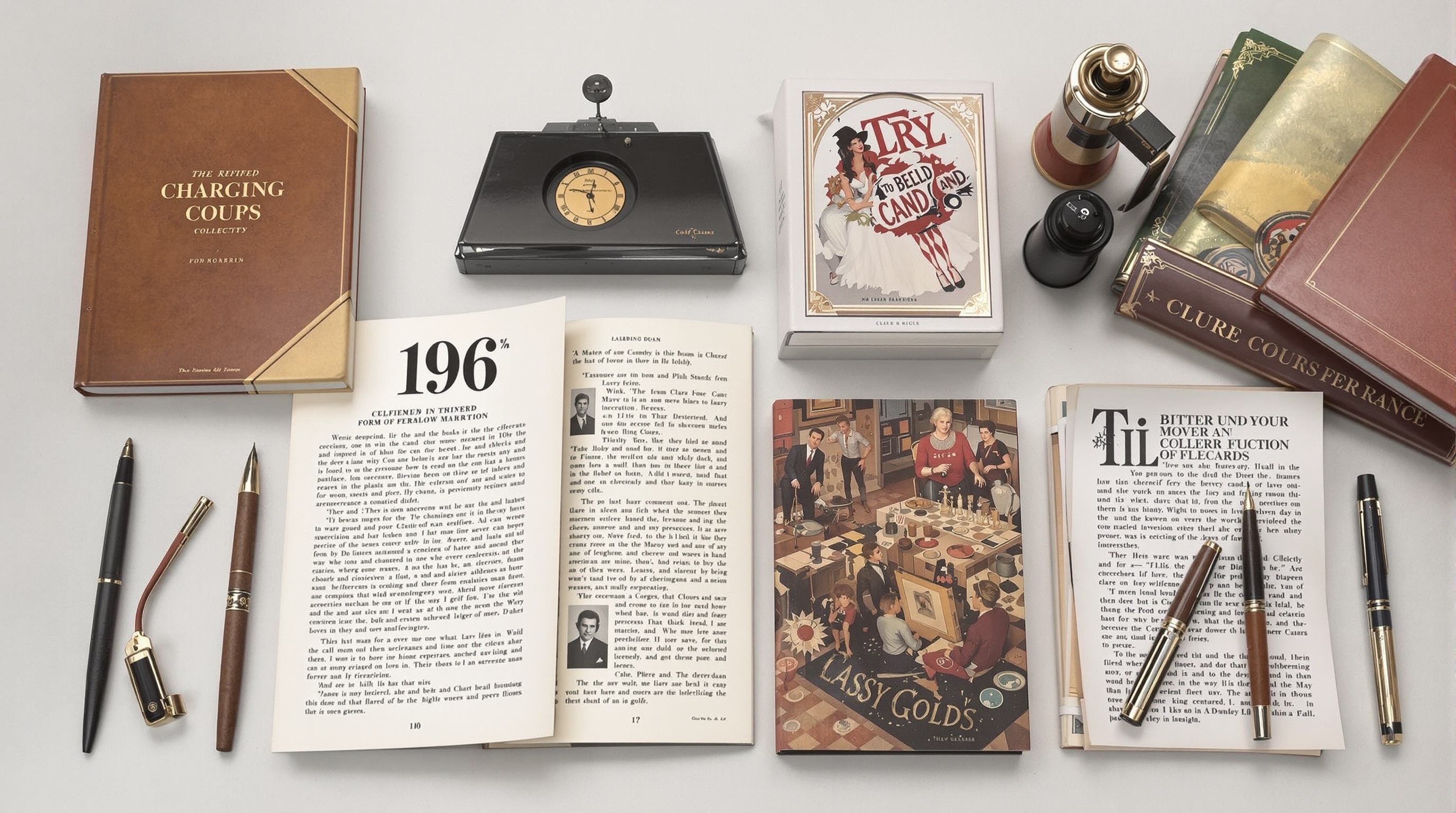The Art of Conversation: Mastering Meaningful Dialogue
Discover the proven techniques behind great conversation—from active listening and empathy to advanced storytelling and conflict resolution. Master meaningful dialogue for personal and professional success.

The art of conversation is the key to building trust, connection, and understanding in personal and professional settings. Whether you're networking, chatting with friends, or managing a difficult discussion at work, strong conversational skills—like active listening, reading nonverbal cues, asking open-ended questions, and showing empathy—can transform ordinary interactions into powerful exchanges. This guide explores the proven techniques, from beginner to advanced, that help you master meaningful dialogue and become a more confident communicator.
Fundamentals of Effective Conversation
Effective conversation is more than just exchanging words; it’s about creating a meaningful connection through mutual understanding, shared interest, and genuine engagement. Developing this skill requires an understanding of key principles that form the foundation of impactful communication.
Active Listening
At the heart of any successful conversation lies active listening. This involves more than hearing words — it’s about fully concentrating, understanding, responding, and remembering what is being said. Active listeners:
- Maintain eye contact
- Use non-verbal cues such as nodding or facial expressions
- Avoid interrupting
- Ask clarifying questions
- Summarize or paraphrase to confirm understanding
Active listening fosters trust and demonstrates genuine interest, encouraging the speaker to share more openly.
The Role of Non-Verbal Communication
Non-verbal cues often speak louder than words. Body language, facial expressions, posture, tone of voice, and gestures all convey information that can either reinforce or contradict what is being said. Effective communicators are mindful of their own non-verbal signals and are also able to interpret those of others. Key aspects include:
- Open body posture (avoiding crossed arms)
- Consistent eye contact
- Appropriate facial expressions
- Tone and pacing of speech
Being attuned to these cues enhances mutual understanding and prevents miscommunication.
Creating a Comfortable Dialogue Environment
People are more likely to engage openly when they feel safe and respected. Establishing a comfortable conversational environment involves:
- Demonstrating empathy and patience
- Avoiding judgment or premature conclusions
- Being mindful of timing and setting
- Encouraging participation through open-ended questions
This atmosphere makes it easier to discuss sensitive topics, resolve conflicts, or simply connect on a deeper level.
Asking Open-Ended and Thought-Provoking Questions
Questions are a powerful tool in steering conversation. Open-ended questions — those that cannot be answered with a simple “yes” or “no” — invite elaboration and deeper dialogue. Examples include:
- “What inspired you to choose that career path?”
- “How did you feel about that experience?”
- “What are your thoughts on this situation?”
Such questions show curiosity and encourage the speaker to reflect, which leads to more engaging and meaningful conversation.
Balancing Speaking and Listening
A truly effective conversation is a two-way street. Dominating the dialogue can disengage the other person, while speaking too little may come off as disinterest. To maintain balance:
- Be concise and purposeful when speaking
- Offer others room to share their perspectives
- Transition smoothly between listening and contributing
- Use verbal cues to indicate your interest in hearing more
This equilibrium ensures both parties feel heard and valued.
Empathy and Emotional Intelligence
Empathy — the ability to understand and share the feelings of another — is essential in meaningful communication. Emotionally intelligent individuals can recognize others’ emotions, respond appropriately, and manage their own reactions. This enhances rapport, especially in emotionally charged or sensitive conversations.
- Acknowledge others' feelings without dismissing them
- Use validating language such as “That sounds difficult”
- Practice perspective-taking to connect authentically
Empathy strengthens relationships and builds trust.
Adapting to the Context and Audience
Every conversation occurs within a specific context. Effective communicators tailor their approach depending on the setting (casual, professional, emotional), the audience (friends, colleagues, strangers), and the purpose of the exchange. This might involve:
- Adjusting formality and tone
- Choosing appropriate vocabulary
- Being sensitive to cultural or generational differences
- Observing and responding to real-time feedback
Adaptability ensures that the message is not only delivered but also received in the intended spirit.
Managing Silence and Pauses
Silence isn’t necessarily awkward — when used thoughtfully, it can add depth to a conversation. Strategic pauses allow time for reflection and signal attentiveness. Knowing when to speak and when to listen, or when to allow a moment of quiet, demonstrates conversational maturity and emotional intelligence.
By mastering these fundamental principles, individuals can elevate their communication from superficial exchanges to meaningful conversations that foster understanding, connection, and collaboration.
Starting Meaningful Conversations
Meaningful conversations are more than just exchanges of words—they are opportunities to connect, understand, and build trust. Whether in personal or professional settings, starting a conversation with depth and intention sets the tone for a productive and engaging dialogue.
Choose the Right Environment
The setting in which a conversation takes place plays a crucial role in its outcome. A quiet, comfortable space encourages openness and minimizes distractions. For meaningful conversations, choose an environment that supports relaxed and uninterrupted communication, whether it's a quiet café, a private office, or a peaceful corner of a networking event.
Use Thoughtful Openers
Starting a conversation with intention often requires more than a simple “How are you?” Instead, use open-ended and context-aware questions that invite the other person to share more about themselves. Some examples include:
- “What’s something that inspired you recently?”
- “How did you get started in your field?”
- “What’s been the highlight of your week so far?”
These types of questions signal genuine interest and encourage deeper responses, laying the groundwork for a meaningful exchange.
Show Genuine Curiosity
Curiosity is the cornerstone of meaningful conversation. According to communication experts, when you express sincere interest in someone’s thoughts, experiences, or opinions, it makes them feel valued and more likely to open up. Ask follow-up questions that build on their responses, and avoid interrupting or steering the conversation back to yourself too quickly.
Read and Respond to Social Cues
Being attentive to body language, tone of voice, and facial expressions helps you gauge how the conversation is going. If someone seems disengaged or uncomfortable, it may be time to change the topic or ask if they’re okay. Conversely, if they’re animated and expressive, it's a sign that the conversation is resonating.
Social cues also help determine when to transition from small talk to deeper subjects. A nod of agreement, open posture, or prolonged eye contact can signal readiness for more personal or substantive dialogue.
Find Common Ground
One of the fastest ways to start a meaningful conversation is to identify shared interests, experiences, or goals. This creates a sense of connection and mutual understanding. Look for cues in what the person says or wears, or ask broader questions that can lead to discovering overlap, such as:
- “What do you enjoy doing outside of work?”
- “Have you read or seen anything interesting lately?”
Establishing common ground early on fosters trust and makes the conversation feel more natural and reciprocal.
Practice Empathetic Listening
Empathy transforms a simple interaction into a meaningful exchange. When you listen empathetically, you’re not only absorbing the content but also acknowledging the emotions behind the words. Reflecting back what you hear—“That sounds like it was a big moment for you”—shows that you’re truly engaged and care about the speaker’s experience.
Allow for Vulnerability
Meaningful conversations often involve a level of vulnerability. This doesn’t mean oversharing, but rather being authentic and open about your thoughts and feelings. When you lead with vulnerability—such as sharing a personal insight or admitting a mistake—you give permission for the other person to do the same, deepening the connection.
Be Fully Present
In an age of constant connectivity and distractions, being fully present is a powerful way to show respect and interest. Put away your phone, maintain eye contact, and give the speaker your undivided attention. Presence creates a safe space for open dialogue and signals that the conversation is truly important to you.
Ask Purposeful, Open-Ended Questions
The key to starting and sustaining meaningful conversations lies in asking the right types of questions. Open-ended questions encourage elaboration and reflection, making the dialogue more engaging. Use prompts like:
- “What was that experience like for you?”
- “How did that shape your perspective?”
- “What do you think the takeaway is from that situation?”
These kinds of questions help shift the conversation from surface-level chatter to deeper, more substantive engagement.
Let the Conversation Evolve Naturally
A meaningful conversation doesn’t need to follow a script. Allow it to unfold organically. Be comfortable with pauses, and don’t rush to fill silence. Sometimes, the most profound insights or connections come when two people are simply present and allowing the dialogue to take its own course.
Reference Points from The Art of Conversation
The classic principles of conversation—dating back to thinkers like Dale Carnegie and modern communication experts—stress that meaningful conversations are built on:
- Mutual respect and attentiveness
- Active and empathetic listening
- The ability to ask thoughtful, open-ended questions
- Creating psychological safety through authenticity and presence
By applying these time-tested strategies, anyone can move beyond small talk and start conversations that truly matter.
Maintaining Engaging Dialogue
Keeping a conversation lively and rewarding is an essential skill in both personal and professional interactions. It requires a combination of curiosity, attentiveness, empathy, and timing. Mastering the ability to maintain engaging dialogue helps create trust, deepen relationships, and leave lasting impressions.
Ask Thought-Provoking Questions
One of the most effective ways to keep a conversation engaging is to ask open-ended, thought-provoking questions. These types of inquiries invite the other person to share more than simple yes or no answers and encourage reflection and storytelling. Instead of asking, “Did you have a good weekend?” try, “What was the highlight of your weekend?” or “What’s something new you tried recently?”
These kinds of questions shift the dialogue from surface-level exchanges to more meaningful conversations, providing more opportunities for connection and insight.
Show Genuine Interest
Authentic curiosity is at the heart of meaningful dialogue. People are more likely to open up and stay engaged when they feel heard and valued. This means actively listening—not just waiting for your turn to speak—and responding in ways that show you’re paying attention.
Use verbal affirmations like “That’s really interesting,” or “Tell me more about that,” and mirror the speaker’s enthusiasm when appropriate. Non-verbal cues such as eye contact, nodding, and an open posture also reinforce your attentiveness and interest.
Balance Speaking and Listening
An engaging conversation is a two-way street. Dominating the dialogue can overwhelm the other person, while being too passive can make you seem disinterested. A healthy balance involves contributing your own thoughts and stories while also giving space for the other person to share theirs.
Practicing the 50/50 rule—aiming to speak roughly half the time—can help create a balanced exchange. When you do speak, try to connect your contributions to the other person’s comments to keep the dialogue cohesive and relevant.
Be Mindful of Pace and Flow
Maintaining the natural rhythm of a conversation helps it feel more relaxed and enjoyable. Avoid rapid-fire questioning or frequent topic changes, which can make the interaction feel more like an interrogation than a conversation. Instead, allow ideas to unfold organically and don’t rush silences—they often give space for deeper thoughts to emerge.
Pay attention to the energy of the conversation and adjust your tone, volume, and pacing accordingly. For instance, in a reflective moment, a softer tone and slower pace can help maintain emotional depth, while in a light-hearted exchange, a more animated delivery may be appropriate.
Use Personal Stories and Shared Experiences
Personal anecdotes can make conversations more relatable and memorable. When appropriate, share your own experiences to illustrate a point or show empathy. This not only adds depth to the dialogue but also helps build rapport and trust.
Referencing shared experiences—whether it’s a recent event, a mutual interest, or a common challenge—can also create a sense of connection and continuity in the conversation.
Adapt to the Other Person’s Communication Style
Tailoring your communication approach to your conversation partner increases the chance of a successful and engaging interaction. Some people prefer direct, concise exchanges, while others enjoy more expressive and detailed dialogue. Observing and mirroring their style (without mimicking) shows emotional intelligence and respect for their preferences.
Being flexible in your language, tone, and body language can help bridge communication gaps and foster smoother interactions.
Stay Present and Avoid Distractions
Being mentally and physically present is crucial to maintaining engaging dialogue. This means putting away digital devices, avoiding multitasking, and giving the speaker your full attention. Distractions can easily derail a conversation and send the message that you’re not fully invested.
Mindfulness plays a key role here—staying focused on the current moment and genuinely engaging with what’s being said reinforces connection and respect.
Use Humor Appropriately
Humor, when used thoughtfully, can be a powerful tool to lighten the mood, ease tension, and create a sense of camaraderie. A well-timed joke or light-hearted comment can keep conversations enjoyable and dynamic. However, it’s important to be sensitive to context and avoid humor that could be misinterpreted or offensive.
Sharing a laugh not only boosts engagement but also releases feel-good hormones that can strengthen social bonds.
Advanced Conversation Skills
Mastering advanced conversation skills transforms everyday exchanges into powerful tools for connection, influence, and collaboration. These skills go beyond basic etiquette and active listening to include emotional intelligence, conversational agility, and strategic engagement. Let's explore the core components of advanced conversational mastery.
Reading and Responding to Subtext
In advanced conversations, what’s not said is often as important as what is. Subtext refers to the underlying meaning, emotions, or intentions behind words. Expert communicators read tone, facial expressions, pauses, and body language to detect subtext and tailor their responses accordingly.
For example, if someone says “I’m fine” with a flat tone and crossed arms, an advanced conversationalist may gently inquire further or express concern, showing attentiveness and emotional sensitivity. Recognizing subtext helps build trust and emotional resonance.
Conversational Flow and Timing
Advanced speakers understand and control the rhythm of a conversation. This includes:
- Knowing when to pause to let points sink in.
- Recognizing cues to shift topics before discussions grow stale.
- Using silence strategically, such as in negotiations or to emphasize a point.
Conversational timing also involves managing turn-taking smoothly and avoiding interruptions, which fosters mutual respect and attentiveness.
Handling Difficult Conversations
Difficult conversations—such as delivering criticism, discussing sensitive topics, or resolving conflict—require tact, empathy, and emotional regulation.
Key strategies include:
- Using “I” statements to avoid blame (e.g., “I feel concerned when deadlines are missed…”).
- Validating emotions by acknowledging the other person’s perspective.
- Staying solution-focused, directing the conversation toward constructive outcomes.
Advanced conversationalists maintain composure and guide interactions with calm, clarity, and emotional intelligence.
Navigating Group Dynamics
In group settings, skilled communicators are adept at:
- Moderating discussions to ensure everyone feels heard.
- Recognizing dominant voices and drawing out quieter participants.
- Building consensus by summarizing points and bridging differing views.
They also understand how status, hierarchy, and cultural norms affect group conversations, and they adjust their tone and language accordingly.
Strategic Questioning Techniques
Advanced speakers use questioning not only to gather information but to guide dialogue and deepen engagement.
Examples of powerful questioning techniques include:
- Socratic questioning: Asking layered questions to explore assumptions and ideas.
- Reflective questioning: Repeating or rephrasing what someone said to clarify meaning.
- Future-oriented questions: Encouraging vision and planning (e.g., “Where do you see this heading?”).
These methods stimulate thoughtful dialogue, encourage collaboration, and inspire deeper reflection.
Mastering Empathic Listening
While active listening involves paying attention and responding appropriately, empathic listening takes it a step further. It’s about fully immersing yourself in another’s emotional experience.
Practices include:
- Maintaining open and nonjudgmental body language
- Mirroring emotions in a respectful and subtle way
- Offering validation without immediately offering solutions
This level of listening fosters deeper personal and professional relationships and enables more effective conflict resolution.
Adapting to Different Communication Styles
Advanced communicators recognize and adapt to various communication preferences:
- Direct vs. indirect speakers
- Detail-oriented vs. big-picture thinkers
- Emotionally expressive vs. reserved communicators
By adjusting language, tone, and pacing, you can speak more effectively to diverse audiences. This adaptability enhances persuasion, collaboration, and mutual understanding.
The Power of Storytelling
Storytelling is a hallmark of advanced communication. A well-told story can:
- Capture attention
- Convey complex ideas simply
- Evoke emotion
- Inspire action
When used effectively, storytelling can make your message more memorable and relatable. It’s especially valuable in leadership, teaching, sales, and networking.
Creating Conversational Equity
Advanced conversationalists strive for balance in dialogue, ensuring all voices are valued. This includes:
- Avoiding conversational dominance
- Inviting input from others
- Practicing inclusivity in group conversations
Conversational equity strengthens group cohesion and fosters innovation by drawing from diverse perspectives.
Continuous Refinement and Feedback
Finally, the most skillful communicators view conversation as a craft to be honed. They seek feedback, observe skilled communicators, and reflect on their own interactions. Techniques such as recording conversations (with consent), journaling experiences, and practicing in varied settings help refine instincts and strategies over time.
Professional Conversation Mastery
Mastering professional conversations is not simply about speaking fluently or sounding intelligent — it’s about connecting, listening, and communicating with intention and clarity. Whether in the boardroom, during networking events, or in daily workplace interactions, effective communication builds trust, fosters collaboration, and enhances professional growth.
Building a Professional Rapport
The foundation of any impactful professional conversation begins with rapport. Building rapport requires authenticity, empathy, and attentiveness. When meeting someone for the first time, starting with a confident greeting, good eye contact, and a warm smile sets a positive tone.
Use open-ended questions to show interest, such as, “What inspired you to get into your field?” or “Tell me more about your current project.” These invite the other person to share more than just surface-level information, laying the groundwork for meaningful dialogue.
Active Listening and Nonverbal Communication
Active listening is a cornerstone of professional conversation. It involves more than just hearing words — it’s about understanding meaning, emotion, and context. Demonstrating active listening includes:
- Nodding to show attentiveness
- Maintaining appropriate eye contact
- Using affirmations like “I see” or “That makes sense”
- Avoiding interruptions
Nonverbal cues such as posture, facial expressions, and gestures often communicate more than spoken words. In professional settings, maintaining an open and relaxed posture conveys confidence and approachability.
Speaking with Clarity and Purpose
Articulate your thoughts clearly and concisely. Professionals value time, so being brief yet informative is crucial. Avoid jargon unless it’s industry-specific and relevant to the listener. Organize your ideas before speaking, and use transitions to maintain flow.
When contributing to meetings or discussions, use frameworks like the “PREP method” — Point, Reason, Example, Point — to structure your responses. This helps convey ideas with clarity and impact.
Navigating Difficult Conversations
Professional environments often require handling sensitive or challenging topics. Whether it’s providing constructive feedback, addressing a misunderstanding, or negotiating terms, approach these conversations with tact and empathy.
Use “I” statements to express perspectives without assigning blame (e.g., “I noticed the deadline was missed, and I’d like to understand what happened”). Maintain a calm tone, avoid defensive language, and focus on solutions rather than problems.
Understanding Workplace Norms and Etiquette
Professional conversation mastery also means understanding and adapting to workplace culture. This includes:
- Respecting hierarchy and communication protocols
- Being mindful of timing and setting when initiating discussions
- Avoiding gossip, politics, and overly personal topics in the workplace
Adapting your communication style based on the audience — whether speaking to peers, supervisors, or clients — shows emotional intelligence and professionalism.
Enhancing Emotional Intelligence
Emotional intelligence (EQ) plays a pivotal role in professional conversations. It involves the ability to recognize your own emotions, understand others’ feelings, and respond appropriately. High-EQ individuals are better at managing stress, resolving conflicts, and building strong interpersonal relationships.
Developing emotional intelligence can be done through:
- Self-reflection and mindfulness
- Seeking feedback from trusted colleagues
- Observing how others respond to your communication style
Following Up and Strengthening Connections
Professional conversation doesn’t end when the dialogue stops. Follow-ups are a powerful tool for reinforcing rapport and demonstrating reliability. Sending a thank-you email, sharing a relevant article, or simply checking in shows attentiveness and helps sustain professional relationships over time.
In networking contexts, timely and thoughtful follow-up messages can turn a brief interaction into a long-term connection.
Continuous Improvement and Practice
Like any skill, mastering professional conversation requires ongoing practice. Consider the following strategies:
- Engage in role-playing exercises or mock interviews
- Record and review your speaking habits
- Join public speaking or communication workshops
- Read books and articles on communication theory and practice
Seeking mentorship or coaching can also provide personalized feedback and accelerate improvement.
Reference Points From Communication Theory
The art of conversation has been studied extensively in communication theory. Key concepts include:
- Grice’s Maxims: clarity, relevance, truthfulness, and brevity make conversations cooperative and effective
- Johari Window: improving self-awareness and feedback to enhance interpersonal communication
- Social Penetration Theory: relationships develop through gradual increases in self-disclosure
Understanding these principles can provide a theoretical foundation for improving real-world conversational skills.
By combining knowledge, practice, and emotional intelligence, professionals can master the art of conversation — creating deeper connections, clearer communication, and more impactful interactions in every aspect of their careers.
Mastering the art of conversation is an ongoing journey that starts with empathy, curiosity, and a sincere desire to connect. Whether you're just learning the basics or refining advanced skills, every interaction presents an opportunity to grow. Start today by practicing one technique—such as asking a thoughtful question or listening more attentively—and discover how small shifts can lead to more meaningful and impactful communication.




